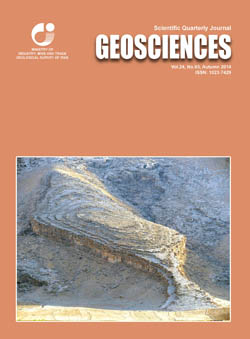Document Type : Original Research Paper
Authors
1 Assistant Professor, Islamic Azad University, Karaj Branch, Karaj, Iran
2 Associate Professor, Islamic Azad University, North Tehran Branch, Tehran, Iran
3 Assistant Professor, Industrial University of Esfahan, Esfahan, Iran
4 Associate Professor, Islamic Azad University, Eslam-Shahr Branch, Tehran, Iran
Abstract
Kahang copper and molybdenum mine is located in Esfahan province and 10 Km far from the east of Zefreh town that is on Urumieh-Dokhtar volcanoplutonic belt. The Kahang region is an alteration and breccia zone. Generally, hydrothermal fluids have affected more than % 90 of rocks of this region. These alteration are related to Copper (Cu) and Molybdenum (Mo) porphyry deposits. Most of the rocks are acidic, semi acidic and sub volcanic. Several kinds of alteration are observable in kahang as propylitic, argilic, silisification and phyllic. The basic oxides were highly decreased in dacite and rhyodacites of exploration area. This is an evidence of argilic alteration effect on the rock units considering that main deposit is not affected by erosion, placed in depth and potassic alteration is not exposed at surface. In study of existing alteration several methods such as remote sensing, studying of thin section and the chemical analysis of samples were used. Another issue that has taken into consideration in this paper is the magma mixing. This subject is confirmed by petrographic evidence such as sieve texture, corroded rims in primary phenocryst quartz, and hydrothermal effects on plagioclases especially in porphyritic andesites. Moreover, the extensive acidic rocks, notable alteration expanse, and also two generations of mineralization reveal assimilation in the studied area. This text has examined the similarities between Kahang and other porphyries in the Urumieh-Dokhtar zone.
Keywords

